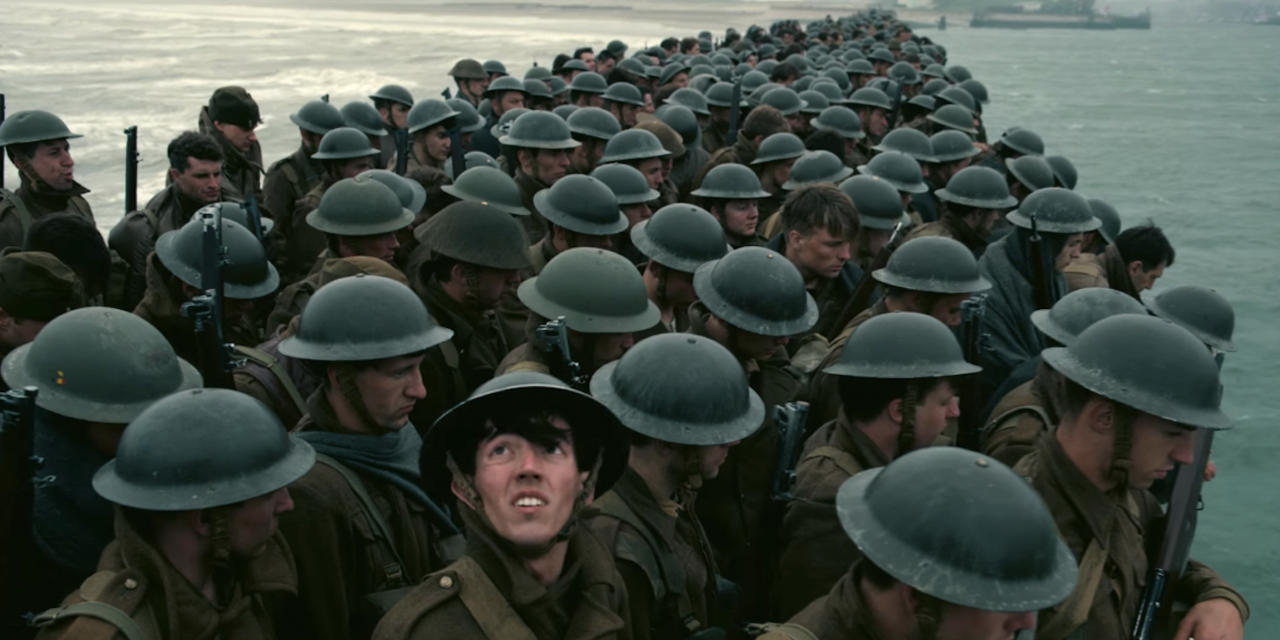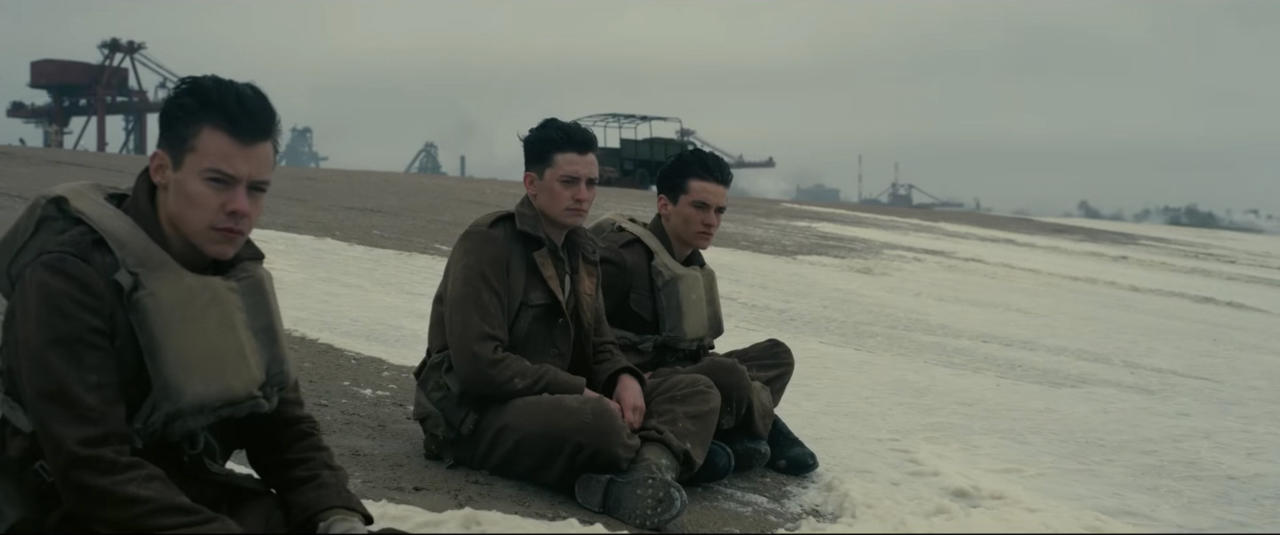As an epic World War II film, Christopher Nolan's Dunkirk has the booming, action-filled moments and sense of scale you'd expect. But even in faithfully recreating the most grandiose aspects of the WWII era, it still maintains a sense of intimacy that could easily have been lost in the cacophony. What results is a film that clearly stands out in the busy and loud summer movie season.
Taking place during the evacuation of Dunkirk, France in 1940, one of the more remarkable events in World War II, we see the armies of Britain and France struggle for survival while trapped from all sides by the German army. While war films tend to focus on large and intense battles, Dunkirk is mostly about the silent and solemn moments in between battles and conflicts, illustrating the struggle and horrors of war-- punctuated by fierce and shattering events that knock the soldiers off kilter. Dunkirk is very much an ensemble film, and the performances from Mark Rylance, Kenneth Branagh, Cillian Murphy, Tom Hardy, and Harry Styles (yes, from One Direction) all give out solid performances that are impactful, yet subdued in the face of the larger conflict.

At a runtime of only 106 minutes, Dunkirk is definitely on the short side compared to the average lengths of Nolan’s films, which mostly run well over two hours. But the brisk pace definitely benefits this film, leaving little filler and downtime, and more focus on set-piece action sequences and interactions with the characters. We rarely see the Nazi army, which instead looms from afar as a violent and oppressive manifestation of death. That in part helps Dunkirk to avoid common war movie cliches and therefore better highlight the humanity, and inhumanity, of war. Unfortunately, many of the characters, outside from a few standouts, feel somewhat underdeveloped. Some emotional moments throughout the film that should have impact ultimately fall flat.
Nolan's approach to telling this story is a bit different than the usual event film. Through three different, interwoven stories, we see the perspectives of the conflict from the land, the sea, and the air--with each vignette taking place over the course of a week, a day, and an hour respectively. While at the beginning these stories are just tangentially related, over time it becomes apparent they are connected on a more direct level--with some storylines even presenting seemingly innocuous characters and events which have greater relevance in another area of the conflict. It’s a very clever way to show different sides of the story, and when it works, it packs a powerful punch, making several sequences have a significant impact.
The Complete FALLOUT Timeline Explained! Warhammer 40k: Darktide - Path of Redemption | Update Trailer Is Fallout 76 Good in 2024? SAND LAND - Official Darude Sandstorm Trailer No Rest for the Wicked - Official Steam Early Access Launch Trailer Battlefield 2042 | Frontlines Mode Returns - Time-Limited Event Trailer Honkai: Star Rail - Official Aventurine Trailer | "The Golden Touch" Life Eater - Official Launch Trailer Devil May Cry: Peak Of Combat | Vergil: Count Thunder Returns Gameplay Trailer 21 Details You May Have Missed In Helldivers 2 Stellar Blade - Official "The Journey" Behind The Scenes Trailer | PS5 Games Zenless Zone Zero - Official Koleda Character Teaser Trailer | "Bite At The Site"
Please enter your date of birth to view this video
By clicking 'enter', you agree to GameSpot's
Terms of Use and Privacy Policy
However, this approach to storytelling takes on too much weight towards the end, making the climax feel clunky and convoluted. The juxtaposition of several events starts to feel more hectic and slapdash, rather than cohesive and meaningful. This is especially apparent when these stories are at different emotional tones, making these transitions--particularly during the final act--jarring and somewhat offputting. When it works, mostly during the first two acts, it’s done remarkably well and makes Dunkirk feel very experimental in its approach to a war film, but it’s not able to keep up the balancing act during the end.
One of the many things that Nolan has excelled at since taking on the Dark Knight trilogy in 2005 is maximizing the sheer amount of content in every frame, and the film features some amazing shots and set-pieces throughout. With visuals coming from cinematographer Hoyte van Hoytema (Interstellar, Her, Tinker, Tailor, Soldier, Spy), Dunkirk possesses some incredibly striking scenery, showing off a level of fidelity that’s not seen too often in summer blockbusters. Moreover, much of the film uses actual in-camera effects, which makes many of the key scenes, such as the dogfights during the Air storyline, feel tangible and have a sense of rawness to it.

As a large scale film, Dunkirk deserves to be viewed at 70mm and IMAX showings. The larger formats allow for more content in the frame to be shown, giving it greater depth. Even scenes featuring downtime with characters solemnly looking off into the distance possess a sense of tragic majesty to them, which is one of Dunkirk’s strengths: bringing out the beauty in the sadness and horror of war. In some ways, it feels more like a big-budget arthouse film taking place during World War II, which is way more entertaining than it would have you think.
When it works--and it does well for the majority of the film--Dunkirk excels at presenting a haunting and visually stunning view of one of WWII's greatest triumphs. Focusing on the sense of dread, and the soldiers' fear of being wiped out at any moment by Nazi bombers, the film carries hopelessness throughout, giving way for a true catharsis at the end with key characters surviving and others given their respect. While the storytelling ends up feeling a bit muddled towards the end, and certain characters don’t get their chance to really make an impact in the film, is still Dunkirk remarkable and a bit of a wonder for films centered around World War II. Instead of wasting the big budget on the big battles and destruction, Nolan saved it for grand and epic scenes focusing on the true heart of the film--which was the long and everlasting struggle of the human condition.
